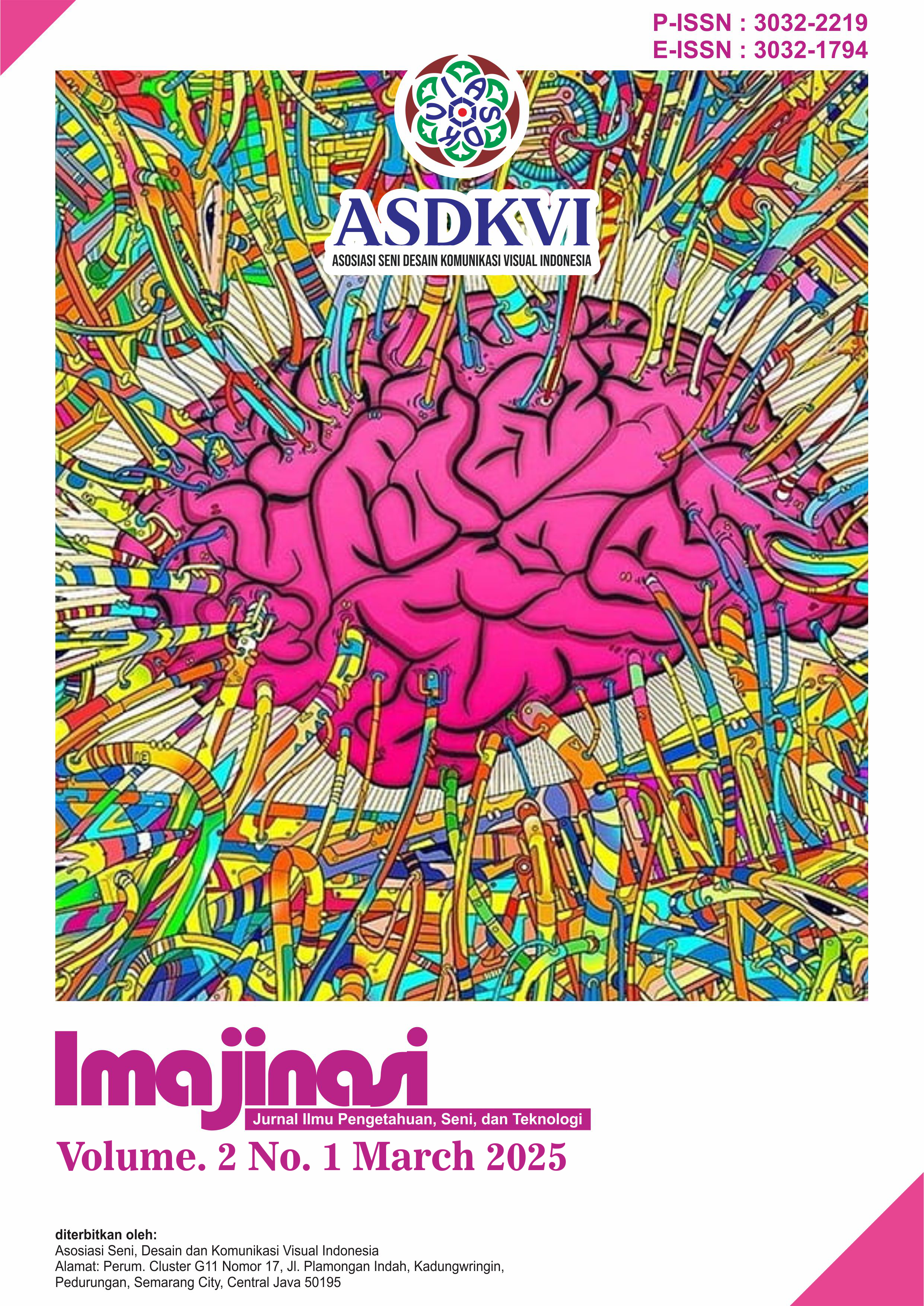Fungsi Kesenian Barongsai Pada Masyarakat Tionghoa di Kecamatan Payung Sekaki Pekanbaru Provinsi Riau
DOI:
https://doi.org/10.62383/imajinasi.v2i2.740Keywords:
Function of Art, Lion Dance, Chinese Community, Riau ProvinceAbstract
This research aims to determine the function of the Barongsai art in the Chinese community in Payung Sekaki District, Riau Province. The theory used in this research is the theory of Allan P Merriam (1964:219:227) which states that art has functions, namely 1) communication function 2) entertainment function 3) symbolic function 4) function of integrating society. The method used in this research is descriptive analysis using qualitative data, with data collection techniques namely observation, interviews and documentation techniques. The subjects in this research were 4 people. The communication function of the lion dance art in Payung Sekaki District can be seen through the movements and appearance of the lion dance and the performers. Wushu martial arts movements and costumes from performers and lion dance. The entertainment function of the Lion Dance art in Payung Sekaki District is not only performed during Chinese New Year holidays, but also other events such as wedding parties, company inaugurations, and welcoming guests. The symbolic function of Barongsai art in Payung Sekaki District can be seen from several symbols of the Barongsai, such as the symbol of courage and strength marked by the beard on the Barongsai's chin and the symbol of prosperity and good luck marked by the ears and tail. The function of integrating the Barongsai art community in Payung Sekaki District certainly creates a sense of togetherness that exists between players and spectators, which indicates that there is community integrity in the Barongsai art.
References
Arifin, Z. (2020). Metodologi penelitian pendidikan. Jurnal Al-Hikmah, 1(1), 1–5.
Arifudin, O. (2022). Optimalisasi kegiatan ekstrakurikuler dalam membina karakter peserta didik. JIIP - Jurnal Ilmiah Ilmu Pendidikan, 5(3), 829–837. https://doi.org/10.54371/jiip.v5i3.492
Fiske, J. (1990). Introduction to communication studies. Routledge.
Hanum, T., Ritawati, T., & Satria, H. (2022). Keberadaan kesenian Gubano Badikiu di Desa Pulau Gadang Kecamatan XIII Koto Kampar Kabupaten Kampar Provinsi Riau. Jurnal KOBA, 9(2), 58–72.
Idawati, I., & Rasfariza, R. (2022). Sistem pewarisan tradisi musik joget suku asli di Desa Teluk Kecamatan Kuala Kampar Kabupaten Pelalawan Provinsi Riau. Jurnal KOBA, 9(1), 14–21.
Iskandar. (2009). Metodologi penelitian kualitatif. Gaung Persada Press.
Merriam, A. P. (1964). The anthropology of music. Northwestern University Press.
Moleong, L. J. (2007). Metodologi penelitian kualitatif. Remaja Rosdakarya.
Nusrotin, A., & Hadi, H. (2024). Pembelajaran seni budaya di SMP Pembangunan Laboratorium UNP. Jurnal Sendratasik, 13(1), 37–47.
Sedyawati, E. (2014). Kebudayaan di Nusantara: Dari keris, tor-tor sampai industri budaya. Komunitas Bambu.
Soekanto, S. (2006). Sosiologi: Suatu pengantar. Raja Grafindo Persada.
Sugiyono. (2010). Metode penelitian kuantitatif, kualitatif dan R&D. Alfabeta.
Sugiyono. (2015). Metode penelitian kuantitatif, kualitatif, dan R&D. Alfabeta.
Sugiyono. (2016). Metode penelitian kuantitatif, kualitatif, dan R&D. Alfabeta.
Usman, H., & Akbar, P. S. (1995). Metodologi penelitian sosial. Bumi Aksara.
Downloads
Published
How to Cite
Issue
Section
License
Copyright (c) 2025 Imajinasi : Jurnal Ilmu Pengetahuan, Seni, dan Teknologi

This work is licensed under a Creative Commons Attribution-ShareAlike 4.0 International License.





